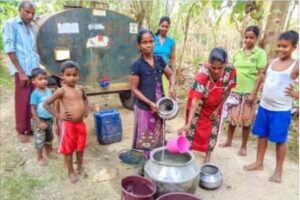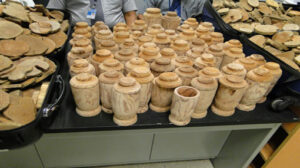
Projects to check growing garbage crisis
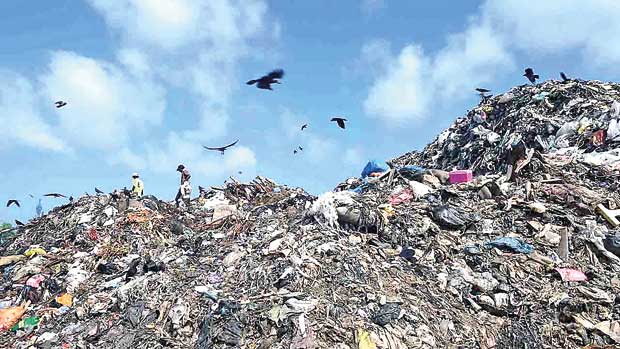
Garbage is not a problem only in Sri Lanka, but also in the rest of the countries. What is vital in this case is not how muck is collected in countries, but how the collected garbage is properly managed and recycled. It is evident how the garbage issue has affected our people and the country owing to the lack of management mechanism to utilize garbage.
I don’t want to reiterate the tragedy and the trouble caused to the people. It is pointless to claim how much garbage is collected. The governing body and its institutions should address the issue positively and take prompt actions to manage and recycle garbage.
It is in fact heartening to say that the Western Provincial Waste Management Authority (WPWMA) has been vocal on this issue and has launched two major projects to recycle garbage and generate electricity. In a discussion with Daily Mirror, the Director of the Western Provincial Waste Management Authority Nalin Mannapperuma said that there has been a drastic change during the past few decades in the physical environment in the country especially in the Western Province. He highlighted that one of the main reasons for this transformation is garbage.
“The main factors that relate to garbage generation are the population and the economic status. It has been analyzed that the economic status of the people living in the Asian and the Asia-Pacific regions will enhance in few decades; consequently there will be a boost in the resource consumption. Hence, there is a tendency for the considerable inclination in the garbage generation in a few decades. It has been estimated that in lower /lower middle income countries (which includes many Asian Countries) waste generation rates will more than double over the next 20 years. We as an Asian country have to face this situation. We can’t avoid it. The Municipal Solid Waste (MSW) in Sri Lanka has been estimated at 7000 Metric ton per day. The contribution from the Western Province to the Municipal Solid Waste (MSW) is 60% (3500 Metric tons per day). The annual growth rate of garbage generation in Sri Lanka is regarded as around 1.2-2.0%,” the Director said.
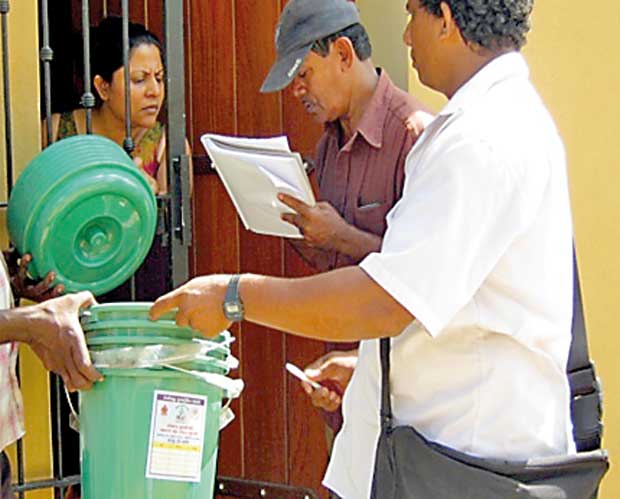
“The main factors that relate to garbage generation are the population and the economic status”
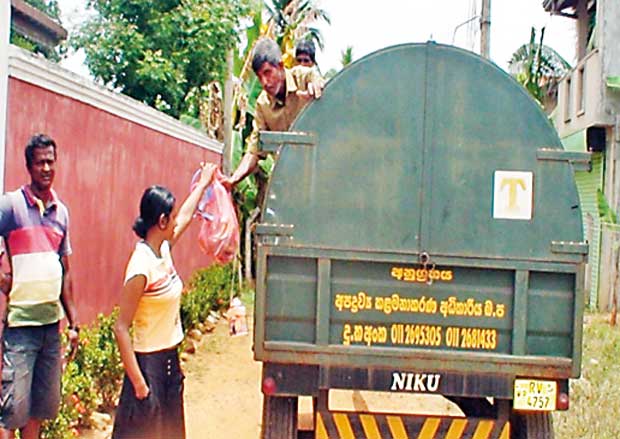
The fact is coherent that Sri Lanka is experiencing a massive garbage crisis and therefore productive actions need to be taken before the condition worsens. Moreover, it is identified that there are 25 dumpsites in the Western Province which are piled up with various types of dirt without a solution for the recycling process. At the same time, it is pleased to know the mapping of a master plan known as the Municipal Solid Waste (MSW) management which will be set to embark in 2018. Until it will be put it to practise, there are ongoing waste management practices as follows.
-
Reduction of garbage generation
-
Source segregation
-
Reusing
-
Recycling
-
Collection
-
Transportation
-
Small /Medium Scale Composting (140 IN SL, 25 in WP)
-
Small/ Medium Scale Bio gas production (no of units 150,000 unit in SL)
-
Small/medium scale Recycling centres
-
Turnkey basis
-
Public Privet Partnership basis
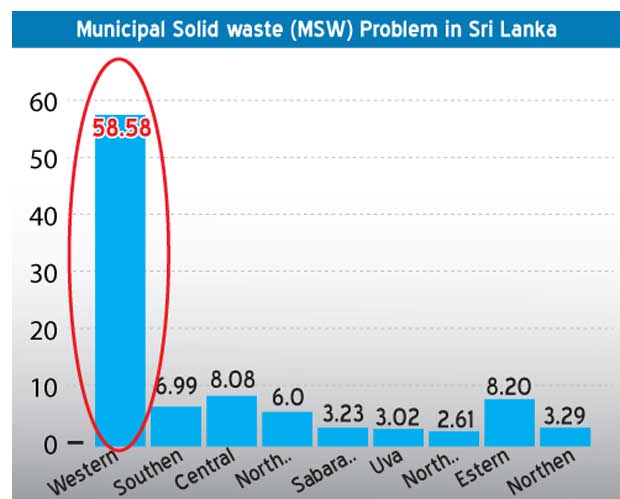
When considering the above actions, we can see that the Western Provincial Waste Management Authority (WPWMA) as a supporting agency to the Local Authority has done a sensible job in monitoring effective methodologies to find solutions to the garbage crisis.
“We have tried on several occasions to find solutions for the garbage issue. But our attempts were unsuccessful due to public protests and the high capital cost. Then we have to seek private and public aid. Therefore, we have endorsed two agreements with Fairway Waste Management (pvt) Ltd which will merge with Germany and Denmark companies and Trilogy ETC (pvt) Ltd. which will merge with OPUS Clean Energy Alliance.” The Director said.
He said that the fist company will commence the project with the garbage capacity of 500mt per day in Karadiyana which would generate 11.5 megawatt (MW) and this will release 89mn kilowatt to the grid per year. As a result of that, it will be adequate to generate electricity for 35000 families. Apart from the generation of electricity, the project is also equipped to generate 41000 tons of liquid fertilizer and 75000 tons of solid fertilizer. The total investment on this project is 73 USD. Then the second company will commence the project with the garbage capacity of 95mt per day at Gampaha, Dambuwatta which would generate 3.4 megawatt (MW). The technology which is to be used for this project is gasification i.e. burning the garbage. The total investment on this project is 30 USD.
In conclusion, the Director of WPWMA expressed his thanks on behalf of the authority to Isura Devapriya, the Chief Minister of the Western Province for the instructions given and the support rendered towards the upcoming project proposals and the issue of garbage. Nevertheless, the Director requests the general public to cooperate with local authorities in segregating and disposing their garbage at appropriate places, so that the muck collectors could collect them conveniently.
Source – Daily Mirror, See more at – http://www.dailymirror.lk/article/Projects-to-check-growing-garbage-crisis-132112.html

Drinking water for drought affected K’gala District
Drinking water is being distributed to 70, 454 drought affected families in 492 Grama Niladari Divisions in 24 Divisional Secretariat Divisions in Kurunegala District, said District Secretary Gamini Illangaratna.
A total of 204, 760 families belonging to 1,610 Grama Niladari Divisions are receiving drought relief. Under this scheme, a family of two receives dry rations worth of Rs 2,000 for two weeks while a family of three or more receive Rs 2,500 worth of dry rations for two weeks which is distributed by cooperatives.
Source – 30/08/2017, Ceylon Today See more at – http://www.ceylontoday.lk/article20170401CT20170930.php?id=6200

Sri Lanka Going Green

Within our children’s lifetimes, Sri Lanka will be powered entirely by green, renewable energy. This optimistic prediction appeared in a new report produced jointly by the United Nations Development Programme (UNDP) and the Asian Development Bank (ADB). It also says that electricity production will increase almost ten-fold from the current 3,700 megawatts to about 34,000 megawatts.
The report titled ‘Assessment of Sri Lanka’s Power Sector—100 per cent Electricity Generation through Renewable Energy by 2050,’ says that 15,000 megawatts will be wind energy and about 16,000 megawatts will be solar energy.
The rest of the power is expected to come from hydro and biomass based plants. They will help to balance supply – to deal with the peaks and troughs in renewable generation which occur when the sun goes in and the wind drops.
There will also need to be electricity storage solutions to provide instantaneous power of 3,600 megawatts and an energy storage capacity of 15,000 megawatt hours. This is needed to ensure stability of the electricity grid and make sure the lights always stay on.
But what would these storage solutions look like? Excess power produced by solar and wind could be converted by electrolysis into hydrogen gas, which could be burnt at night to produce electricity. This is a completely clean technology that produces pure water as a by-product.
Giant batteries
Another storage method would be giant batteries. In July, it was announced that Elon Musk, the billionaire founder of Tesla, will build the world’s largest lithium ion battery to store renewable energy in South Australia in partnership with French energy utility Neoen.
The 129 megawatt hour battery, which is paired with a wind farm, is designed to improve the security of electricity supplies across South Australia.
Musk told reporters in Adelaide the project was not without technical challenges, given it would be the largest battery installation in the world “by a significant margin.”
“When you make something three times as big, does it still work as well? We think it will, but there is some risk in that,” he said.
“We’re confident in our techniques and the design of the system.”
The battery forms a key part of the state government’s $550m energy plan drawn up after last year’s state-wide power blackout – and if it is as successful as Elon Musk hopes, could form the basis of energy storage solutions in Sri Lanka in the future.
The UNDP and ADB report also has good news for the Sri Lankan economy. It suggests that the country could save a total of $18 billion between now and 2050 as the island moves away from imported oil and coal to clean, home grown renewables.
The report estimates that in order to transition to 100% electricity generation by renewable energy, Sri Lanka will need investment of $50 billion. This sounds like an enormous amount of money, but spread over the next 30 years it works out at less than $2 billion a year.
According to the Director of the South Asia Energy Division, Priyantha Wijayatunga, “The ADB has expressed its continuous support for low-carbon development of Sri Lanka.” “Recent proposals including a rooftop solar programme and a large-scale wind power project demonstrate the ADB’s commitment in this regard. This assessment report can serve as a comprehensive example for future utilities globally on how decentralized clean energy services can be governed.”
Way forward
Climate Change Technical Adviser of the UNDP, Alexandra Soezer agrees that green energy is the way forward for Sri Lanka. “We will continue to expand our activities in this field and pave the way for a better tomorrow.”
It’s not only in Sri Lanka where renewables are making huge progress. For example, Norway is becoming the world’s first fully electric-powered country with a concerted push for sustainability, according to an energy think tank.
EnergiNorge, an industry advisory body, set out its green energy programme and said it was possible for the country to operate entirely using clean electricity by 2050.
Hydropower is currently the source of over 96 per cent of Norway’s electricity and there are more than 110,000 electric cars in use in the country and the government recently declared that no vehicles powered by fossil fuels will be sold in Norway after 2025.
According to the Director of EnergiNorge, “Our target is for Norway, based on hydropower and better collaboration between businesses and the authorities, to become the world’s first fully electric society by 2050. That will enable us to take a leading role in climate work while improving our competitiveness.”
Meanwhile, in India the price of solar energy has fallen so quickly this year, that it has cancelled plans to build nearly 14 gigawatts of coal-fired power stations. Analyst Tim Buckley said the shift away from the dirtiest fossil fuel and towards solar in India would have ‘profound’ implications on global energy markets.
This is already being reflected, with solar panel capacity set to overtake nuclear energy next year in a historic landmark.
The total capacity of nuclear power is currently about 391.5 gigawatts, but the total capacity of photovoltaic cells is expected to hit 390 gigawatts by the end of this year with demand growing at up to 8 per cent per year, according to GTM Research.
While this would be a landmark moment for renewable energy, nuclear still generates much more electricity than solar – nearly 2.5 million gigawatt-hours a year compared to the latter’s 375,000 gigawatt-hours.
Stephen Lacy, writing on GTM’s website, said: “It’s still going to be a record-breaking year for new solar capacity additions – yet again.”
Stephen Lacy added: “In the last three years, growth rates and cost reductions for solar have far exceeded projections. Meanwhile, high costs, slow construction, and competitive renewable alternatives are causing the global nuclear industry to falter.”
“The trend lines are becoming clearer every year.”
The sun delivers enough energy to the earth in an hour to provide humans with everything they need for an entire year.
As a tropical island, Sri Lanka is well placed to take advantage of all this free energy – as long as the country can continue to develop green energy policies and attract the necessary foreign investment.
Source – 30/08/2017,Ceylon Today, See more at – http://www.ceylontoday.lk/print20170401CT20170630.php?id=28826
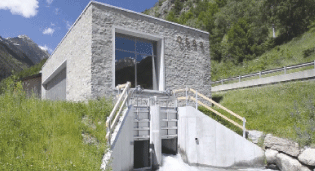
Sinharaja in Danger
Alleged illegal construction of mini hydro power plants projects in the Sinharaja Forest Reserve, a national park and a biodiversity hotspot in Sri Lanka, has caused many environmental damages to the world heritage. Sinharaja is of international significance and has been designated a Biosphere Reserve and World Heritage Site by UNESCO.
The illegal construction of the Project that crosses the Kosgulana River and along the water catchment areas of Diya Eli, Ganga Jala in the Sinharaja Forest buffer zone has caused considerable damages to the rainforest, even though the environmentalists and the Rainforest Protectors Organization raised concern over the environmental damages resulted by the project. In the meantime, the relevant authorities are being informed about the damages caused by the project, and they are accused of being silent over the law violation.
The Ministry of Power and Energy has planned to construct108 Mini Hydro Power Plants in one of the high bio-diversities of the country along Sripada, Sapthaya Kanya, Maskeliya Oya, and through Lakshapana Dam and V-Oya without any proper Environmental Impact Assessment (EIA) being conducted by the relevant authorities, while causing damages to the environment, and the water sources of the country. This construction is being carried out in the Northern Sinharaja Rainforest buffer zone at Kosgulana, approximately 4km East from Kudawa main entrance.
Ampanagala, Vevathenna, Kombarava Ganga, Dambulu Oya, Banamadu Oya, Gombarau Oya, and many lakes and water streams are being affected and damaged by this project. “The construction of this project on the basis of economic development is being carried out while ignoring the protection of nature reservoirs and the water sources of the country,” claimed Ravindra Kariyawasam, the environmentalist and Director for Center for Environmental and Nature Studies (CENS).
More than 78 Private companies will be benefited from this project of 108 mini hydro power plants to which many environmental committees have expressed concern over the environmental damages caused by it. Nevertheless, the project is under construction and reported as a violation of the National Environmental Act of Sri Lanka.
He also claimed that the project carries out the blasting method in its process which has caused visible damages to the rainforest and the gravel roads of Sinharaja Rainforest. “Many environmental damages are allegedly being posed to while the groundwater level of the areas is going down,” he said. Moreover, the wild animals and birds that depend on the water catchment areas of the rainforest are also being exposed to these environmental damages. He also alleged the Central Environmental Authority (CEA) for not attending to their duties of protecting the bio-diversities and the nature reservoirs of the country. Fences were being built to block the pristine water streams from entering into the constructional areas while obstructing the speed of water flow which will result in the reduction of oxygen in the water. Due to this temperature of water changes causing discomfort for the animals and the water creatures in the rainforest.
Moreover, a dam is being built blocking the Kosgulana River in the Sinharaja buffer zone and several acres of rainforest cleared by heavy machinery and concrete along the pristine and protected river bank. Large trucks and machinery utilized for this construction had cleared through what was once a small footpath in the Sinharaja buffer zone, between Kudawa and Kosgulana.
“As a result of the rainforest continuously being exposed to deforestation and anti-environmental friendly projects within the conservative areas, the level of rain that the country receives every year has been reduced which will also result in affecting the people and the wildlife of hill countries,” said Ravindra Kariyawasam.
A research conducted by the International Energy Agency (IEA), a Paris-based organization established in 1974, reveals that the groundwater level of the area and the environment is exposed to an irreparable damage when such anti-environmental projects are carried out in the conservative areas. For Example, the Azwam mini hydropower plants project in Egypt reportedly affected the villagers and the wildlife in the area.
“The result of Randenigala and Victoria projects that claimed to produce power even to India is a good example to stop these anti-environmental projects in the country as those projects were a failure in protecting the environment,” said Ravindra Kariyawasam.
“There are many natural ways to produce power and energy rather than constructing mini hydro power plants or large scale power plants. Electricity could be produced from water, air and solar. Hence the government should try and ensure that the projects do not harm the environment and natural reservoirs while using the natural ways to produce power and electricity,” he further stated. “It is significant to note that the relevant authorities are fully aware of the irreparable damages which will be resulted by the project, but they still allow them to carry out the illegal constructions with no EIA s conducted with regard to the project,” he claimed.
Environmentalists
This project allegedly violates the environmental laws in the Constitution that protect the conservative areas of forest reserves, rivers and UNESCO World Heritage Sites. The responsible authorities at the Central Environmental Authority (CEA), the Ministry of Environment, the Forest Conservation Department, and the Department of Wildlife Conservation (DWC) should be vigilant in acting against the illegal project constructions. “Failure to take timely action will result in further destruction and total mockery of the environmental laws in Sri Lanka and ruin this UNESCO World Heritage Rainforest,” claim the environmentalists.
This is the second instance the CEA has allowed destructive mini-hydro projects within a World Heritage Rainforest, after allowing “Eli Hatha” mini-hydro project in Sripada (Central Hills World Heritage Rainforest) in total violation of the Flora and Fauna Protection Ordinance and National Environment Act.
These mini-hydro projects generate small amount of power (approximately 1 to 2 MW) while the destruction to the eco-system and the environment is considerably huge. Approximately, 12,979 hectares in Samanala Adaviya (Sripada) nature reservoir was declared as a nature reserve by a gazette notification in September 7, 2007 and is protected by the Fauna and Flora Protection Ordinance (FFPO). Section 3 and 6 of the ordinance strictly forbid any development activity in a nature reserve such as construction of permanent or temporary structures, deforestation, removal of plants, destroy fauna and flora or construction of roads.
It raises a question as to why the Department of Forest is still silent on the issue even though it is clear the constructions are illegal and underway within the premises of the Sinharaja Rainforest, claimed the environmentalists. The CEA has not done a proper Environmental Impact Assessment (EIA) available for public comment nor information about such a project communicated to respective organizations in charge of protecting Sinharaja World Heritage Rainforest. Questions have been raised about the involvement of these authorities to hide this destructive project from the public.
Hundreds of pristine water streams that originate from the hilly Rajuwankanda rainforest flow towards Kosgulana River through the buffer zone have been destroyed by heavy trucks.
The Sunday Leader questioned the relevant authorities as to why they have not acted against the law violations and the environmental damages caused by the project to the world heritage Sinharaja rainforest.
Responding to the questions, the Director General of CEA, K.H. Muthukudarachchci said the project is legally being cleared by the authority as they have conducted proper EIAs for the mini hydro power plants project that was being constructed in the premises of the World Heritage Sinharaja Rainforest. He also said the project is not illegal nor violates any laws of the National Environmental Act.
Forest Department
Director General of the Department of Forest Anura Sathurusinghe responding to The Sunday Leader said the particular area where the project is being under construction does not come under the authorization of the Department or the forest reservoirs of the country.
“I recently came to know that there are violations of some conditions by the CEA. Hence, I will visit the place tomorrow to check the environmental damages caused by the project and will recommend the CEA to act against any violations of law,” said Anura Sathurusinghe. He also claimed that the Department is not authorized to act against the law violations of the project since it has been cleared by the Sabaragamuva Divisional Secretariat of Kalavana, but they will act against the project if there are any law violations and environmental damages to the rainforest.
Source – The Sunday Leader, See more at – http://www.thesundayleader.lk/2015/12/27/sinharaja-in-danger/

Jeep Drivers A Law Unto Themselves With Political Patronage
Yala National Park Warden is helpless
Department of Wildlife Conservation’s failure to take action against errant safari jeep drives at the Yala National Park for blatantly breaking speed limits and taking food for the wild animals to attract them to their vicinity to please the clients had endangered the wildlife.
Director General, Department of Wildlife Conservation (DWC) is accused of for the present deteriorating situation in the park which has allowed the jeep drivers to take the law unto their hands, a senior DWC officer said.
According to him, although the vehicles that enter the park is not allowed to speed more than 30 Km.p.h, this rule is ignored by majority of the drivers and also not taking any action against them for taking food to feed the animals.
“This cause danger to the wildlife and if stern action is not taken against those who violate the park rules there will not be any animals in the park in the years to come,” sources claimed.
Meanwhile, former Director General DWC, Dr. Sumith Pilapitiya said that had the programme he initiated when he held the office of the Director General DWC, the issues facing especially at Yala Park would not have cropped up. “I empowered the then park warden to take stern action against those who break the rules the Department had imposed and that I will stand by him even political pressure mounted on me. With the assurance given to him, the park warden Suranga Ratnayake took strict action and suspended 70 vehicles for violating the rules,” Dr. Pilapitiya said.
Dr. Pilapitiya said that although he received pressure from the politicians not to take action against their supporters who are jeep owners and drivers, he had flatly ignored the calls and had allowed the park warden to carry out the instructions. “Those who violated the rules for the first time were suspended from entering the park for one week. If found guilty for the second time they were suspended for two weeks and for the third time they were suspended for one month and for the fourth and fifth time if they got caught for violating the rules they were barred from entering the park for three months and one year respectively,” Dr. Pilapitiya added.
According to Dr. Pilapitiya, as long as politicians interfere with the DWC work, rules cannot be imposed at Yala. “As the Director General I have set examples to my staff and although my official vehicle went into the park without obtaining a ticket, there were many instances I had visited the park in my private vehicle not for official purposes but to see the wild animals. Never did I enter the park without obtaining a ticket. If the boss sets the rules his staff will have to follow them and cannot violate the guidelines. During my tenure I never allowed the parties that booked the bungalows to exceed more than ten guests. I maintained the law equally to the rich and the poor alike,” Dr. Pilapitiya claimed.
Political patronage
According to the DWC sources who wished to remain anonymous, during the former regime most of the jeep drivers were supporters of a powerful politician in the area and they behaved as if the Yala Park was their own property. Rules were violated openly and in order to please their clients they took the food to the park, drove on high speed and even used mobile phones to contact each other to spread the word if sighted wildlife. Although we thought that this could be easily stopped after the new government came into power it got worsened. Certain politicians in the area come to park to see the animals and I have seen as to how they blocked their vehicles preventing other vehicles from coming to the location to capture pictures of leopards. Had they allowed other vehicles to come, they knew that the leopard will run into the wild and his convoy of vehicle blocked the area. Even if the warden of the gate staff ask the jeep drivers not to take food inside or not to speed inside the park they will scold at them claiming that they are working for politicians in the area,” sources alleged.
The sources further stated as to how there were many deaths by hit and run drivers. “Even we have noticed how the jeep drivers throw waste and empty bottle to entice the animals and enter large number of vehicles at a time. The Wildlife Department does not want to enforce restriction in number of vehicles entering the park at once. During long weekends even 400 to 500 vehicles enter the park at once. These speeding vehicles disturb the wildlife as they keep away from the open areas in fear of the noise of the speeding vehicles,” sources added.
The sources further queried as to why the DWC cannot block the telephone signals within the park once again, to stop the usage of mobile phones in the park. “Earlier hums were introduced to limit the speed as well. Now most of these hums do not exist and there is no plan to re-introduce them as well,” he added.
Boycott errant drivers
Meanwhile Past President Hotels Association Srilal Miththapala told this newspaper as to why the tour operators and the hoteliers in the vicinity without waiting for the government to impose restrictions refuse the errant jeep drivers who breaks the park rules regularly from taking their clients in their jeeps. “The regular visitors know who breaks the park laws and speed inside the park, feed the animals putting the clients’ and the animals’ lives in danger and destroy the environment by discarding their garbage in thepark. If the tour operators do not allow their clients to travel with such drivers and if they are totally boycotted even for a certain period they can be rehabilitated,” Miththapala added.
He further stated as to how the Minister of Sustainable Development and Wildlife Gamini Jayawickrema Perera took action against the Yala warden for taking action against the errant jeep drivers which led the then DG Dr. Pilapitiya to tender his resignation as a protest.
“This park warden imposed the restrictions on the directives of Dr. Pilapitiya which were highly commended. As this regulation hampered the drivers who were supporters of the area politicians, Minister Jayawickrema Perera reprimanded the warden and after Dr. Pilapitiya left he was transferred from Yala. We have such politicians who do not want to render a service to the country but only to look after the interests of their supporters and their colleagues,” Miththapala alleged.
According to Miththapala, since the Yala warden was reprimanded and transferred for implementing the park rules, the DWC employees have become demoralised and they do not want to impose any restrictions against the jeep drivers. “These employees are now scared to take action against these errant drivers in fear of losing their jobs. The registration number plates of these errant drivers are all in photographs and why cannot the Director General DWC take action against them even at this stage to safeguard the wildlife,” Miththapala queried.
Miththapala further said as to how foreign groups have complained about the situation in Yala and Pinnawala elephant orphanage and added that the number of foreign travelers’ visits to Yala and Pinnawala would decline slowly.
“Why cannot the DWC impose a surcharge for those who want to enter the park during the peak hours? If this method is implemented, people will opt to enter the park either before or after the peak hours and the inside congestion could be reduced systematically,” Miththapala added.
DG denies allegations
However refuting allegations, Director General DWC, W.S.K. Pathirathna said that Yala affairs are managed without any hindrance and there is no political pressure mounted on him.
“In regard to what you ask about the usage of mobile phones within the park, the issue cropped up during the war. Since there were army camps within the park, the army got a telephone tower installed in the middle of the park since there were no telephone signals. It is from this telephone tower the mobile phone uses get the signals. We have made a request to the Ministry to get this tower removed and once it is done no one will be able to use mobile phones within the park,” Pathirathna said.
When asked as to why he as the DG cannot take action against the jeep drivers who speed with the park and also give food for the animals endangering their lives. Pathirathna said that measures have been taken to purchase speed meters and deploy DWC employees to nab the drivers that speed their vehicles more than 30 km.p.h “We have already filed legal actions against few errant drivers. If any party claims that we do not take action against these drivers it is to discredit this department. My officers implement the park laws and will not permit visitors to break the laws,” Pathirathna further claimed.
Asked why the Wildlife Department cannot restrict the vehicles that enter the park at a time, the Director General said that permission had to be obtained from the ministry to implement such a regulation. “If we restrict the number of vehicles that enters the park at a time, it would be a revenue loss to the government. Before taking such a decision we have to get permission from the Finance Ministry as well,” the Director General added.
Although it is a open secret as to how Minister Jayawickrema Perera took action against the Yala warden for suspending the errant drivers from entering the park in order to maintain discipline within the park during Dr. Pilapitiya’s tenure, the present DG said that there are no political interference in the DWC work.
Minister Gamini Jayawickrema Perera is overseas and was not available for a comment.
Source – The Sunday Leader, See more at – http://www.thesundayleader.lk/2017/06/18/jeep-drivers-a-law-unto-themselves-with-political-patronage/

Amendments to National Waste Management policy
The amended and updated national policy on waste management will be addressing problems pertaining to the implementation of the cluster based approach and the polluter pay principle, the demarcation of duties and national level guidelines for the involvement of the private sector.
The Ministry of Environment and the Ministry of Science, Technology and Research along with the Central Environmental Authority are presently working on preparing the said policy on waste management including the disposal of garbage accumulated within the City of Colombo and other cities elsewhere.
The Waste Management Authority (Western Province) explained that the existing policy was being reformed to specially address problematic areas such as the cluster based approach in relation to which there has been public resistance to the establishment of mass scale projects and there being no proper demarcation of duties at present. Currently, the waste management system is managed by the Ministry of Megapolis and Western Development, the Authority and Local Government authorities, which has in turn led to a mess being made of the waste management system.
Director of the Authority, Nalin Mannapperuma said that special emphasis would be paid to addressing the major issues such as those pertaining to the implementation of the polluter pay principle which has met with a bottleneck at present, and the absence of guidelines at a national level with regard to public-private partnerships.
Source -Nation, See more at – http://nation.lk/online/2017/08/12/amendments-to-national-waste-management-policy.html

Karadiyana ‘Waste to Energy’ project inaugurated with Fairway Waste Management
The ground breaking ceremony to launch the ‘Waste to Energy’ project at Karadiyana was held recently with the attendance of President Maithripala Sirisena.
Along with the president, Western Province Chief Minister Isura Devapriya, Megapolis and Western Development Cabinet Minister Patali Champika Ranawaka, Policy Planning and Economic Development Deputy Minister Dr. Harsha De Silva, Telecommunication and Information Technology Cabinet Minister Ranjith Siyambalapitiya, Road Passenger Transport Minister Lasantha Alagiyawanne and many other special guests.
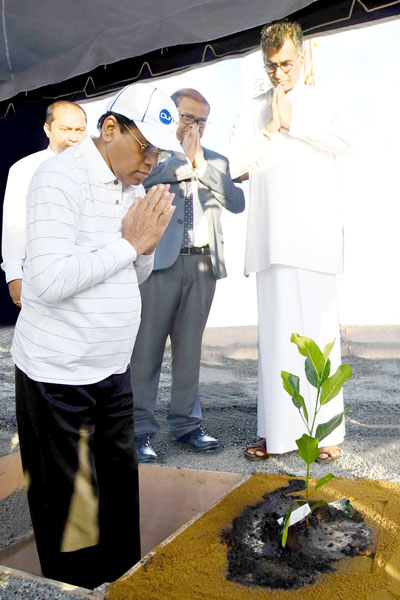
Fairway Waste Management, a subsidiary of Fairway Holdings, was awarded the project by the government of Sri Lanka to establish the waste to energy plant together with the Waste Management Authority.
At present, Karadiyana receives approximately 500 tons of waste per day from municipalities such as Dehiwala-Mount Lavinia, Kesbewa and Maharagama. The site is currently managed by the WMA and operates as an open dumping area, resulting in many negative environmental, social and health issues.
The proposed cutting edge waste processing site brings together international consultancy and local expertise to produce the most environmental friendly and sustainable waste processing solution. The plant is a hybrid design that minimizes the amount of waste that is thermally treated. While reducing the waste diverted to landfills, the plant will also recover the nutrients in the waste returning it to earth as fertilizer and the energy content will be transformed into electricity to be distributed to consumers. The process will work in stages of Mechanical Sorting, Biological Processing Plant, and Mass Burn Incineration.
Speaking at the event, Isura Devapriya stated, “The garbage issue has become a national issue at present. Until now we have settled for short term solutions which have been detrimental. We have now stepped into long term solutions and transformed Waste Collection into Waste Management. Taking it a step further, we have initiated this ‘Waste to Energy’ project. We are grateful to corporates such as Fairway Holdings for stepping up to invest in such national projects.”
“When I took over, the situation was much different,” commented Patali Champika Ranawaka. “The state authorities, environmental groups, residents were all disputing each other. We have now taken the initiative to take into consideration ideas and suggestions of all parties concerned and bring about this proposal, which is a great achievement,” he added.
The ‘Waste to Energy’ project is scheduled to be completed in 18 months and will bring about many long term advantages.
Source – 28/08/2017, DailyMirror, See more at – http://www.dailymirror.lk/article/Karadiyana-Waste-to-Energy-project-inaugurated-with-Fairway-Waste-Management-135477.html

Polythene ban effective from next month
The ban on polythene related products will come into force from the first of next month. Therefore the Deputy Director General of Central Environmental Authority Upali Gunaratne said that people must get used to an alternative system. Deputy Director General Upali Gunaratne said that manufacturing, selling and use of lunch sheets, bags manufactured with HI density polythene, glossary bags and lunch boxes produced with expanded polyester will be banned. He said that burning of polythene in open spaces would be banned. He added that decorations using polythene for religious, political and other events would be prohibited. He said that there are 11 organizations which produce bio degradable lunch sheets.
Source – ITN News, See more at – http://www.itnnews.lk/local-news/polythene-ban-effective-from-next-month/

Chinese nationals attempting to smuggle Kothala Himbutu detained
Customs staff officials attached to the Bandaranaike International Airport Departure unit detained two Chinese nationals in possession of 65 mugs made of Kothala Himbutu (Salacia Reticulata) and 40.4Kgs of Kothala Himbutu chips valued at Rs.729,000 on August 28.
The two Chinese travelers aged 30 and 32, were bound to leave the country via flight UL 838 at were released by customs officials after a penalty of Rs.25000 was imposed.
It has been reported that the detection was made by the Deputy Director of Customs Mr.Jagath Obeysekara while the investigation was conducted by several senior officials of the customs unit.
Source – 29/08/2017, Ada Derana, See more at – http://www.adaderana.lk/news/42731/chinese-nationals-attempting-to-smuggle-kothala-himbutu-detained-

New native freshwater fish found in Suriyakanda stream
A Sri Lankan researcher has revealed a new species of loach, a freshwater fish, found in a stream in Suriyakanda.
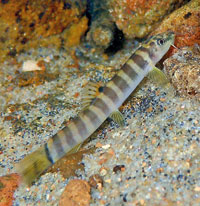
Banded Mountain loach
Loaches are bottom-dwelling freshwater fish that live in natural streams as well as rivers, the researcher notes.
During a fish survey in Suriyakanda two years back, researcher Hiranya Sudasinghe found a fish that looked different from other known loaches. He has proved it is a fish species new to science. The findings were published this week in the acclaimed scientific journal ZooTaxa, officially recognising the fish as a new species endemic to Sri Lanka.
It has been classified as Schistura madhavai in honor of Prof Madhava Meegaskumbura, a senior researcher who has discovered a number of new species. Mr. Sudasinghe who graduated from the University of Peradeniya also recalls Prof Meegaskumbura’s guidance. Mr. Sudasinghe’s previous research led to recognising two new catfish species endemic to Sri Lanka.
The new fish was recorded from a small stream about two metres wide in Suriyakanda. The stream flows through a tea plantation. Suriyakanda is about 1,000 metres above sea level, so the new fish has been tagged as a hill-stream loach. In his research papers, Mr. Sudasinghe says, loaches have small barbels which act as sensory organs that helps them to find food on murky bottoms of freshwater streams. Most loaches have either three pairs or four pairs of barbels and the new member has three pairs of barbels, the researchers explains.
The researcher says little is known about the biology of these species in Sri Lanka though there are four other loaches commonly called as ‘Ahirawa’ in Sinhala. Revealing an interesting fact, Mr. Sudasinghe says in his research paper that the native freshwater fish recorded from the highest elevation in Sri Lanka could be a loach. It is the endemic Sri Lanka banded mountain loach (Schistura notostigma) found above 1,200 metres in hill country.
He says in his paper that the spiny loach (Lepidocephalichthys thermalis) is the most common of all the loaches in Sri Lanka found in a variety of habitats including streams, tanks, rivers and ponds in both dry and wet zones. It has a high tolerance towards environmental and physical parameters and sometimes found in harsh conditions as well, he says in the published research.

Common loach
Even its name “thermalis”, is derived because it was first discovered and described from the hot springs in Kinniya, Trincomalee, Mr. Sudasinghe says in the paper. However, it is not endemic and found in India as well.
Tiger loach (Paracanthocobitis urophthalma) is another endemic fish in this group found in streams and rivers in the lowland wet zone. The bands in the body of Tiger loach is similar to that of a tiger, the researcher says in the paper.
The endemic fish known as Sri Lanka Jonklaas’s loach (Lepidocephalichthys jonklaasi) is found only in well-shaded small streams in lowland rain forests and is known only from few scattered localities making it critically endangered, just few steps from extinction, Mr. Sudasinghe’s research paper says.
Mr. Sudasinghe says the new loach, too, had been found only from one stream in Suriyakanda and not anywhere else. This is a risk to the fish’s survival.
However, there is possibility that the new loach be found in other streams in the area. With the new discovery, the number of Sri Lanka’s freshwater fish increased to 88 and 55 of them are endemic to the country.
Source – 27/08/2017, The Sunday Times, See more at – http://www.sundaytimes.lk/170827/news/new-native-freshwater-fish-found-in-suriyakanda-stream-256501.html

